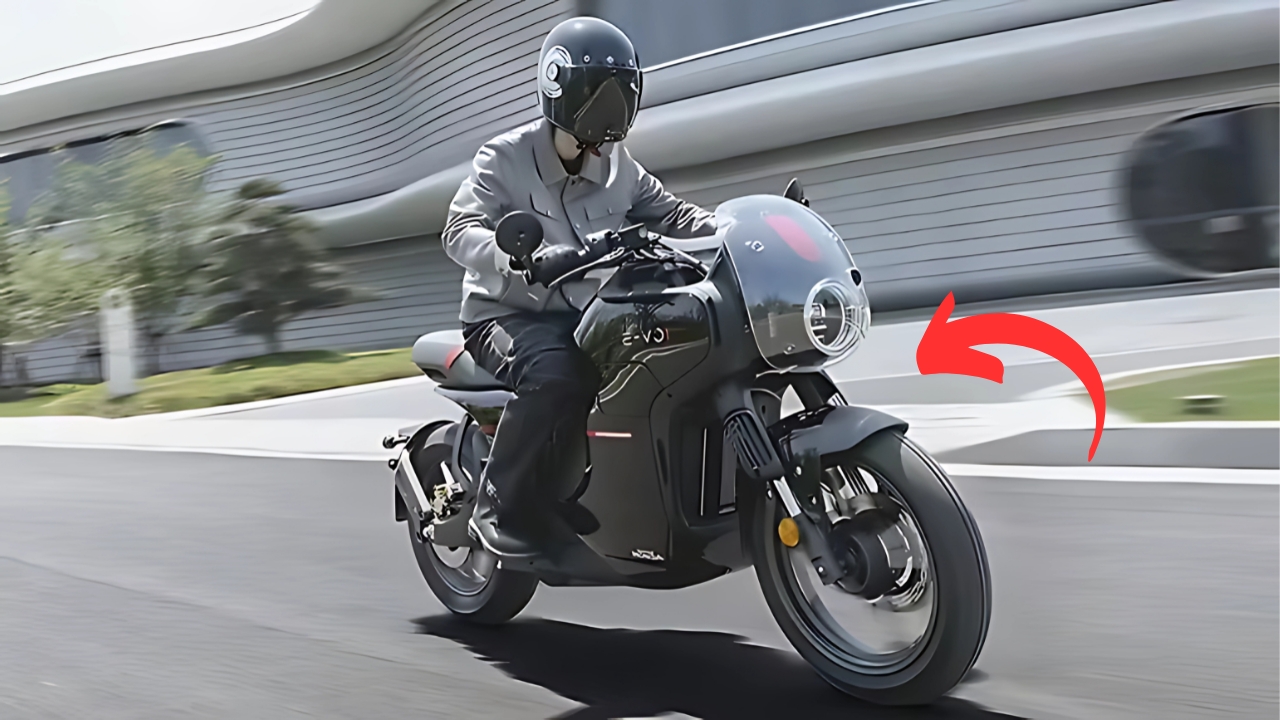Honda’s Electric Motorcycle Revolution: The world’s largest motorcycle manufacturer has been quietly orchestrating one of the most ambitious electrification strategies in the two-wheeler industry. Honda’s approach to electric motorcycles represents a fundamental shift from their traditional internal combustion engine dominance, promising to deliver cutting-edge technology with competitive pricing and impressive range capabilities that could reshape the entire motorcycle landscape.
Understanding Honda’s Electric Vision
Honda’s commitment to electric mobility extends far beyond simply replacing engines with motors. The Japanese giant has embarked on a comprehensive transformation that encompasses everything from swappable battery technology to advanced connectivity features, all while maintaining the reliability and performance standards that have made Honda motorcycles legendary worldwide.
The company’s electrification strategy centers around three core principles: accessibility through competitive pricing, practicality through extended range, and innovation through advanced technology integration. This approach reflects Honda’s deep understanding of diverse global markets, from bustling Asian cities where efficient commuting is paramount to North American highways where performance and range are critical factors.
Revolutionary Concepts Leading the Charge
Honda’s recent unveiling of the EV Fun Concept and EV Urban Concept at EICMA 2024 provides a compelling glimpse into the future of electric motorcycling. The EV Fun Concept, scheduled for commercialization in 2025, represents Honda’s first electric sports model equipped with a fixed battery system. This naked sports design targets mid-sized internal combustion engine performance while delivering the unique characteristics that only electric powertrains can provide.
The innovative aspect of Honda’s approach lies in their recognition that electric motorcycles offer fundamentally different riding experiences compared to traditional bikes. The EV Fun Concept emphasizes the quiet, vibration-free ride that creates an entirely new emotional connection between rider and machine. This philosophy demonstrates Honda’s understanding that successful electric motorcycles must offer compelling advantages rather than simply matching combustion engine performance.
The EV Urban Concept embodies Honda’s vision for urban electric mobility, featuring function-focused design elements and sophisticated connected technologies. These models incorporate Honda’s in-house developed battery packs, showcasing the company’s commitment to controlling critical components of their electric ecosystem.
Competitive Pricing Strategy
Honda’s pricing approach for electric motorcycles reflects their strategic goal of making electric mobility accessible to mainstream consumers rather than limiting it to premium market segments. The company recognizes that widespread adoption of electric motorcycles depends heavily on achieving price parity with comparable internal combustion models while offering superior operating economics.
The development of dedicated electric motorcycle production facilities, including a highly efficient plant scheduled to become operational in India by 2028, demonstrates Honda’s commitment to achieving cost efficiencies through specialized manufacturing processes. This approach allows Honda to optimize production specifically for electric vehicles rather than adapting existing combustion engine manufacturing lines.
Honda’s modular development strategy for electric models further supports competitive pricing by enabling shared components across multiple models. This approach reduces development costs while maintaining the flexibility to create diverse products that serve different market segments and riding preferences.
Impressive Range and Performance Capabilities
Range anxiety has been one of the primary barriers to electric motorcycle adoption, and Honda’s response demonstrates sophisticated understanding of battery technology and energy management systems. The company’s approach to range optimization involves multiple complementary strategies rather than relying solely on larger battery packs.
Honda’s development of swappable battery technology represents a paradigm shift in how riders interact with electric motorcycles. The Mobile Power Pack system allows riders to exchange depleted batteries for fully charged units in minutes, effectively eliminating range limitations for urban commuting and extending the practical utility of electric motorcycles for longer journeys.
The integration of CCS2 quick charging capability in models like the EV Fun Concept aligns Honda’s motorcycles with automotive charging infrastructure, providing riders access to the rapidly expanding network of fast charging stations. This compatibility significantly enhances the practical range of Honda’s electric motorcycles by reducing charging time and increasing charging location availability.
Advanced Technology Integration
Honda’s electric motorcycles incorporate sophisticated technology systems that extend far beyond basic propulsion. The integration of dual seven-inch TFT displays in premium models provides riders with comprehensive information about vehicle status, navigation, music, tire pressure, and battery condition. This level of connectivity transforms the motorcycle from a simple transportation device into a comprehensive mobility platform.
The ASIMO OS operating system, derived from Honda’s robotics expertise, enables ultra-personal optimization that adapts to individual riding patterns and preferences. This system learns from rider behavior to optimize energy consumption, route planning, and performance characteristics for each specific user.
Honda’s collaboration with Renesas Electronics to develop high-performance system-on-chip technology with 2,000 TOPS AI performance capability demonstrates their commitment to creating truly intelligent motorcycles. This processing power enables advanced driver assistance systems, predictive maintenance capabilities, and sophisticated energy management that continuously optimizes performance and efficiency.
Global Market Strategy and Production Scale
Honda’s ambitious target of selling one million electric models annually by 2026, representing five percent of total sales, reflects their confidence in electric motorcycle market growth. The progression to 3.5 million units by 2030, or fifteen percent of total sales, indicates Honda’s expectation that electric motorcycles will become a substantial portion of their business while traditional internal combustion models continue to dominate overall sales volume.
The geographic distribution of Honda’s electric motorcycle strategy acknowledges different market maturity levels and riding preferences. Asian markets receive priority for commuter-focused electric scooters and motorcycles, reflecting the high population density and shorter average trip distances that favor electric propulsion. European and North American markets will receive performance-oriented models that can handle longer distances and highway speeds.
Honda’s establishment of charging infrastructure partnerships demonstrates their understanding that successful electric motorcycle deployment requires comprehensive ecosystem development. Collaborations with other major manufacturers including Kawasaki, Suzuki, Yamaha, KTM, and Piaggio on standardized swappable battery systems create industry-wide compatibility that benefits all participants.
Environmental Impact and Sustainability
Honda’s electric motorcycle strategy aligns with their broader commitment to achieve carbon neutrality across all products and corporate activities by 2050, with specific targets for motorcycle carbon neutrality in the 2040s. This timeline reflects the complexity of transforming global motorcycle markets while maintaining the reliability and performance standards that customers expect.
The environmental benefits of Honda’s electric motorcycles extend beyond zero direct emissions to include reduced noise pollution in urban environments. The quiet operation of electric motors addresses quality of life concerns in densely populated areas while maintaining the mobility benefits that motorcycles provide in congested traffic conditions.
Honda’s commitment to local production for local consumption reduces transportation-related emissions while supporting regional economic development. The planned electric motorcycle production facility in India exemplifies this approach by serving growing Asian markets from a strategically located manufacturing base.
Challenges and Market Dynamics
The transition to electric motorcycles presents several technical and market challenges that Honda must navigate successfully. Battery technology continues to evolve rapidly, requiring Honda to balance current market needs with future capability improvements. The company’s modular battery approach provides flexibility to incorporate technological advances without requiring complete vehicle redesigns.
Charging infrastructure development varies significantly across different regions, influencing Honda’s product strategy for each market. The combination of swappable batteries for urban environments and fast charging capability for longer distances provides Honda with multiple solutions to address infrastructure limitations.
Consumer education remains a critical factor in electric motorcycle adoption. Honda’s emphasis on demonstrating the unique benefits of electric propulsion, rather than simply matching combustion engine performance, helps establish electric motorcycles as distinct product categories with their own advantages.
Future Outlook and Industry Impact
Honda’s comprehensive approach to electric motorcycle development positions them to capture significant market share as electric adoption accelerates. The combination of competitive pricing, practical range, advanced technology, and Honda’s reputation for reliability creates a compelling value proposition for diverse customer segments.
The planned introduction of thirty electric models by 2030 demonstrates Honda’s commitment to serving every major motorcycle market segment with electric alternatives. This comprehensive coverage ensures that customers can find electric Honda motorcycles suitable for their specific riding needs and preferences.
Honda’s investment in dedicated electric motorcycle manufacturing capabilities signals their confidence in long-term market growth while positioning them to achieve cost advantages through specialized production processes. The ability to produce electric motorcycles efficiently will become increasingly important as market competition intensifies.
A New Era of Motorcycling
Honda’s electric motorcycle strategy represents more than a simple transition from combustion engines to electric motors. The company’s comprehensive approach addresses the entire ecosystem required for successful electric motorcycle adoption, from competitive pricing and practical range to advanced technology integration and charging infrastructure development.
The combination of Honda’s manufacturing expertise, technological innovation, and market understanding positions their electric motorcycles to achieve the broad consumer acceptance necessary for transforming the motorcycle industry. As these models enter production and reach global markets, they promise to deliver the stellar price and performance characteristics that could accelerate electric motorcycle adoption worldwide.
Honda’s commitment to maintaining their position as the world’s leading motorcycle manufacturer while transitioning to electric propulsion demonstrates that environmental responsibility and business success can align effectively. The company’s electric motorcycle revolution has the potential to establish new standards for performance, value, and sustainability in the two-wheeler industry.

